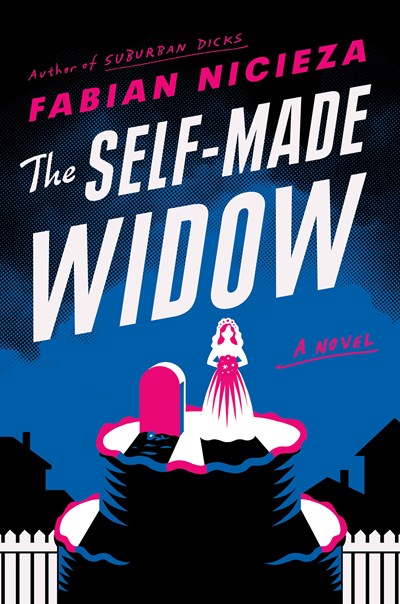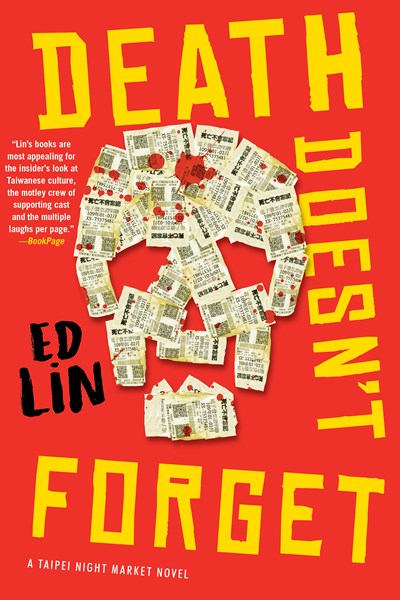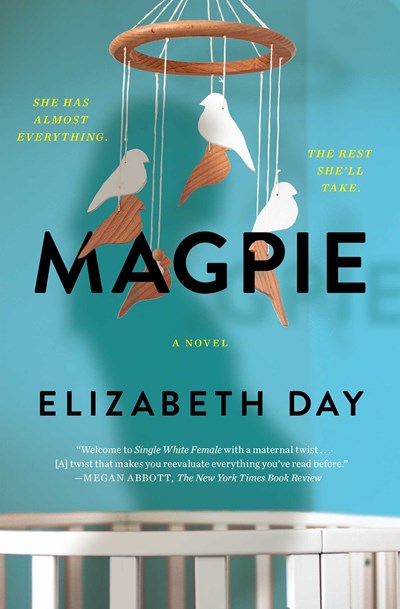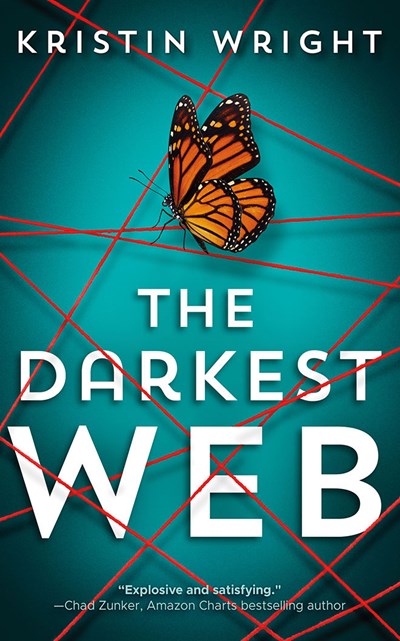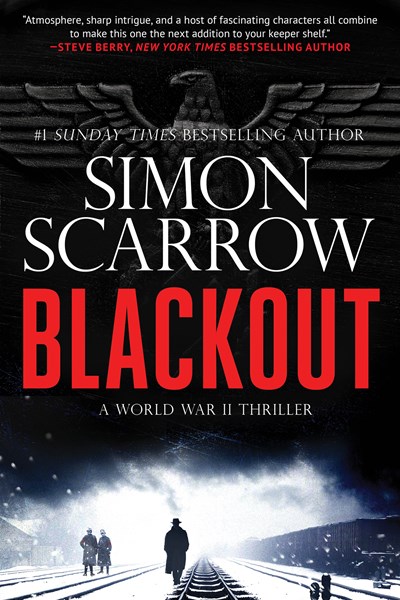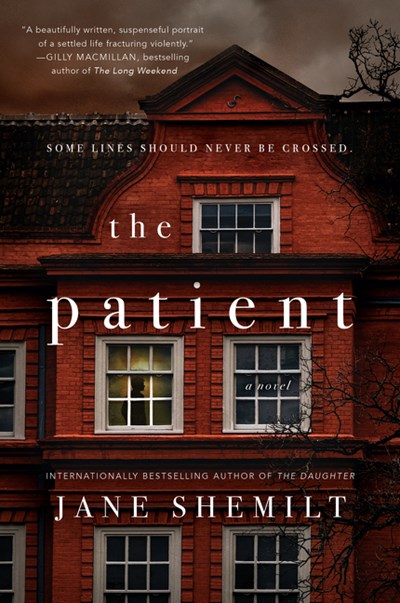On the surface, Oak Hill, New Jersey, is, yes, a perfect neighborhood. Perfect lawns, perfect homes, perfect families. A crack appears when we see local high-schooler Cassidy on a clandestine outing, running late to meet Billy, the kindergartener she babysits for when he walks home from school. He doesn’t show, and his disappearance reveals the hurt, deception, and toxic boredom lurking behind many of the tony town’s facades. Billy’s mother, Rachel, is overprotective; his father resents his younger wife for trapping him in this second marriage by becoming pregnant; his older stepbrother, a small-time drug dealer, barely acknowledges Billy. Cassidy, reviled in the papers as The Babysitter, is having an affair with a much older man. The local celebrities, has-been musician Chris and his actress wife, Allison, have just split up and she’s moved away with no explanation. As the investigation into Billy’s disappearance continues, his shattered family is the nexus of a town in turmoil, allowing Alterman to show how pressure and desperation can manifest in very different ways and result in vastly different outcomes. Billy’s disappearance isn’t the only crime, and the interpersonal stories as well as the crime-centered mysteries will keep readers shaking their heads in disbelief as they keep the pages turning, hoping for justice.
Review
After Andie Stern’s debut in Suburban Dicks—in which she solved a shocking murder in her New Jersey town—you’d think the former FBI employee would be ready for a little R&R. Or at least as much relaxation as a mother of five can get. But when the husband of Molly, a member of her mom’s group—which Andie secretly calls The Cellulitists—unexpectedly dies, Andie strongly suspects Molly is to blame. The hard part, but also the fun part, is proving it. Helped out by disgraced journalist Kenny Lee, a buddy from Suburban Dicks and the only man in the book who isn’t a complete, well, dick, along with new friend Sathwika, Andie follows the many leads, which eventually bring her and Kenny far too close to home. Nicieza, the co-creator of Deadpool, is a wonderful satirist, and the friction brought about his women characters’ multiple lives as mothers, wives, professionals, and even criminals is pure pleasure and more than just a little bit realistic. Towards the end there’s the hint that Andie and Sathwika may set up their own detective agency. Pray God this is so.
We’re back on the streets of Taipei with Jing-nan, the owner of Unknown Pleasures, a night market food stall. Taipei native Jing-nan spent a couple of years at UCLA only to be called home when his parents died, leaving him to run the take-out—a bittersweet turn of events. Here he’s initially accused of two murders: of a small-time criminal who dates his girlfriend’s mother, and of a police captain. With little effort, Jing-nan manages to worm his way out of the accusations, only—along with girlfriend Nancy, her mom, and his food-stall employees—to get sucked into the search for the real criminals. While the mystery, such as it is, chugs along on the back burner, we’re treated to Lin’s always wonderful array of characters, bits of Taiwanese history, and explanations of the current political scene—all without feeling like we’re in school. Lin is definitely a satirist, but this novel is deeply poignant at the same time. While this book can be read on its own, Lin’s books benefit from reading them in series, as so much of the writing is focused on character development.
Goldin’s (The Night Swim) startling work immerses readers in the disorientation and vulnerability that is amnesia. Every time Liv Reese wakes up, she has no memory of the previous two years. Notes that she writes on her hands and Post-its on her doors and walls guide her to contact friends who can help and to find the precious journal that details each vanished day. She repeatedly learns afresh that she was injured two years ago, leading to her memory problems, while other terrible events from that time are slowly revealed. In the present, the awakening that opens the book sees her running from an apartment with a bloody knife. Did she hurt someone? Whose apartment was that? Why does it seem like a different season? Then the point of view switches to a dead body being found, and a chase is on that sees us switching back and forth in time from before the injury, when Liv was a nightlife-loving young New Yorker who worked at a high-status magazine, to a few days before the bloody-knife incident, when the past catches up to her with a vengeance. The displacement caused to Liv by her condition is visited on readers to fast-paced and thought-provoking effect here; the story is gripping too, all adding up to a top-shelf psychological thriller for fans of Alice LaPlante.
hen London couple Marisa and Jake rent their spare room to Kate, the three get along fine at first, even if things are a little awkward. The extra money is certainly helpful when Marisa becomes pregnant with a longed-for baby. But soon things turn weird and then sinister as unpregnant Kate shows up at Marisa’s prenatal yoga class and, in other ways, seems to be pushing her way into their lives far too much. Marisa fears that the interloper might even be having an affair with Jake. Then we switch to Kate’s point of view, to encounter the same events, even the same conversations, from a very different perspective. Day’s (The Party) story (while not recommended to those facing the pain of infertility, a major plot point) is fascinating because of the individual stories and the novel’s upside-down turn halfway through. The portrayal of Jake’s snooty mom, Annabelle, a wicked-witch-type mother-in-law, is the icing on the strange cake. Devotees of unreliable-narrator tales, snap this one up!
A fast-paced, perplexing mystery plus the main suspect’s heavy past combine to make Wright’s second in the series (after The Darkest Flower, 2021) one to remember. Throughout the book, there are two stories. In the public one, beautiful—so beautiful it’s problematic—workaholic lawyer Jane Knudsen is accused of murdering her tyrant boss and is defended by her former college roommate, lawyer Allison Barton. Then there’s the private tale, in which it’s slowly revealed why Jane never lets anyone get close and finds taking the fall for a murder preferable to telling the truth. Child sexual abuse is a prominent theme here, and Wright manages to keep those crimes off-screen while their emotional and practical repercussions are sensitively explored. In the process, readers are given two relationships to root for: Jane’s fledgling one with a coworker she dares to fall for, and Allison’s as a single mom who’s trying to balance romance with a promising man with raising a child who wants her mother all to herself. There’s a lot to ponder here, and before you know it, a twist shatters the story. Try this after Wanda M. Morris’ All Her Little Secrets, which also features a woman lawyer accused of murder.
It’s 1939 and a vicious serial killer is pursuing his bloody wont in Berlin’s trains. Assigned to these cases, which his superiors in the Kriminalpolizei, or Kripo, think are unrelated accidents, is Inspector Horst Schenke, a former racecar driver who’s embarrassed that injuries related to his old career have kept him from the front. He’s not one to rock the boat but quietly resists the ridiculous bureaucracy, lawlessness, and brutality of “the party,” even as his thuggish superiors hint and then state outright that he won’t get ahead without a Nazi badge. Glamorous dates (or as glamorous as nightly blackouts, rationing, and lack of fuel allow) with his resistance-leaning girlfriend keep the moral quandaries from eating Schenke up too much, but when the killer goes after a Jewish woman, Ruth Frankel, a surviving witness whom the inspector feels compelled to save, the pressure is on. Nazi higher-ups feel the woman can be used as bait and force a bootlicking rule-follower to shadow Schenke’s every move so he’ll comply. At the same time, the killer continues his spree while attempting to cover his tracks, an effort that puts Ruth and her protector in grave danger. The close calls and chases in this novel are truly scary, and the unusual perspective ramps up the intrigue. Fans of serial-killer mysteries who are looking for something a little different are the audience for this one.
We need a V. I. (Vic) Warshawski novel every year or two to remind us of how good crime fiction can be. This title—Paretsky’s 22nd in the series—is one of her very best: taut yet complex, fast-paced yet thoughtful. The novel begins as Vic’s dogs, off the leash and exploring Lake Michigan, discover an injured teenage girl tucked between two boulders, barely alive. Through Vic’s efforts she makes it to the hospital, only to disappear soon afterwards. The search for the girl brings us into a classic Paretsky world of Chicago mobsters and lowlifes, some extending back to Vic’s childhood. Just when you think there are too many characters, too much plot, the story falls beautifully into place. Few crime novels seem more of the moment than Overboard, with its depiction of police brutality and of a city chaotically emerging from the pandemic. Longtime fans will enjoy catching up with Vic’s friends, especially her neighbor, the delightful Mr. Contreras. Powerful.
Michelle Miller finally got herself out of Lorida, Florida on a swimming scholarship and never looked back. Now, 15 years later, she’s returning to see her dying mother, and, unavoidably, confront her painful past. Back then, she was poor—she shared a bedroom in a trailer with her brother—and reclusive; she didn’t come alive until she met Sissy, a rich and rambunctious classmate. They were soon joined by Morrison, a queer punk rock kid, and their dysfunctional little family was complete. From shoplifting in department stores to hanging out in gay bars, Sissy offers fun in technicolor, but it comes at a price: possessiveness, dramatic mood swings, and ultimately violence. But it isn’t until she’s at college in Georgia that Michelle begins to understand how much of her youth Sissy destroyed, and how little of it she’ll ever get back. The surprising ending—with some extraordinary revelations—is downright healing. And while there is criminal behavior, it’s on the sidelines of the story, never at the center. A wonderful tale about the power of friendship to transcend evil that young adults should also appreciate.
A richly imagined novel in which the elements of suspense grow organically from the characters’ lives. Fifty-something Rachel, a doctor, has a tidy, if dull, life with her husband of many years, a medical practice she enjoys, and a beautiful home in the cathedral town of Salisbury. Her one regret is adult daughter Lizzie, who is totally over her mother (“Take a break Mum, stop texting me!”). When French painter Luc walks into Rachel’s office—he and his family are new to town and he’s experiencing psychological issues—the attraction is immediate, although left unfulfilled. Meanwhile, Rachel suspects she is being followed, her husband is acting weirdly, and Lizzie is keeping something from her. Eventually she and Luc reunite and—professional ethics be damned!—initiate their affair while in the south of France. Affairs can peter out, some manage to live on in secrecy, while others are exposed, creating scandal. But Rachel and Luc’s relationship razes their world—leading to murder, incarceration, and abandonment. Way to throw away those middle-class inhibitions! Readers will be seduced by Shemilt’s ability to gradually build a story, leading us from the mundane to the miraculous.


